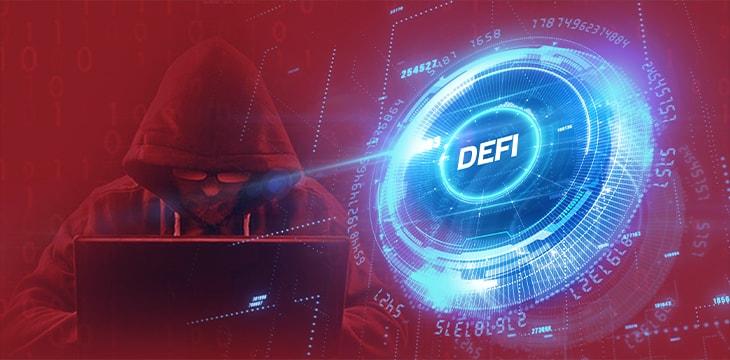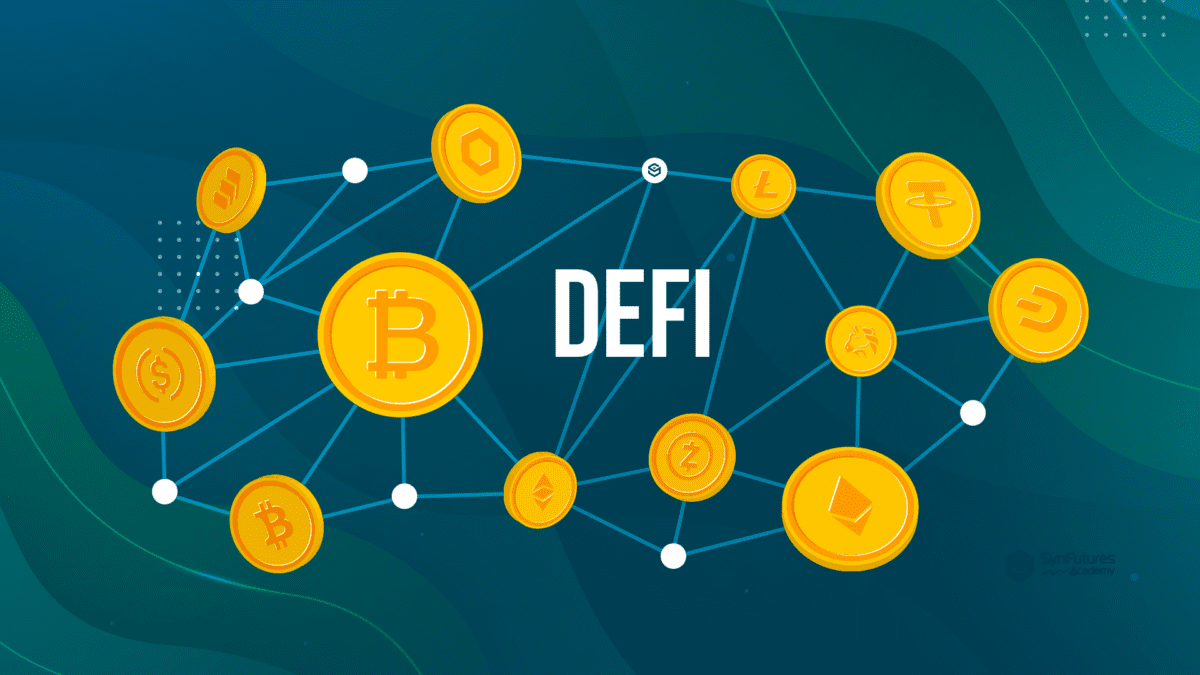What Are DeFi Liquidity Pools And How Do They Work
In the ever-evolving landscape of decentralized finance (DeFi), liquidity pools stand as the cornerstone, powering a multitude of financial services and innovations. In this comprehensive exploration, we delve into the intricate world of liquidity pools, uncovering their mechanisms, significance, and the transformative impact they wield within the realm of DeFi.
In the intricate landscape of decentralized finance (DeFi), liquidity pools emerge as the foundational reservoir powering a multitude of financial activities. At its core, a liquidity pool in DeFi is a dynamic entity, a reservoir of assets that becomes the lifeblood of decentralized trading, lending, and various financial activities within the decentralized ecosystem. Unlike the conventional financial system, where liquidity is typically provided by centralized institutions, DeFi liquidity pools operate on the principles of decentralization, allowing users to contribute and withdraw assets autonomously.
Essence of DeFi Liquidity Pools:
The essence of a DeFi liquidity pool lies in its ability to democratize access to liquidity. By utilizing smart contracts, these pools create a decentralized environment where users can actively contribute their assets and, in turn, participate in the financial activities facilitated by the pool. This departure from the traditional reliance on centralized entities for liquidity not only aligns with the decentralized ethos of the blockchain but also introduces a level of autonomy and accessibility previously unseen in the financial realm.
Core Components of Liquidity Pools:
Pairs of Assets and Equal Value: The core components of liquidity pools are pairs of assets, typically in equal value, forming the building blocks of decentralized exchanges (DEXs). These pairs can range from well-known cryptocurrencies like ETH/USDT to stablecoin pairs like DAI/USDC. The equal value aspect is crucial, as it ensures a balanced and efficient functioning of the liquidity pool.
Establishment on Decentralized Exchanges (DEXs): Decentralized exchanges serve as the natural habitat for liquidity pools. These platforms, built on blockchain technology, facilitate peer-to-peer trading and other financial activities without the need for a central authority. DEXs provide the infrastructure for the establishment and operation of liquidity pools, creating a decentralized marketplace for users.
How Liquidity Pools Work:

Understanding the inner workings of liquidity pools in decentralized finance (DeFi) necessitates a deep dive into the role of Automated Market Makers (AMMs) and the intricate balancing act orchestrated by liquidity providers. These mechanisms underpin the functionality of DeFi liquidity pools, reshaping the landscape of decentralized trading and financial activities.
Automated Market Makers (AMMs):
At the heart of liquidity pools lies the transformative innovation of Automated Market Makers (AMMs). In stark contrast to traditional order-book models found in centralized exchanges, AMMs are smart contracts that autonomously facilitate the swapping of assets within a liquidity pool. This departure from the conventional order-book approach introduces a level of automation and efficiency that is fundamental to the success of DeFi liquidity pools.
Understanding Automated Market Makers (AMMs) in DeFi
Greetings, crypto enthusiasts! Continuing our exploration of DeFi (Decentralized Finance), let’s delve into the realm of Automated Market Makers (AMMs), a pivotal component of decentralized exchanges.
Introduction to…
— White Beard’s Crypto Voyage (@tuananhmmo) December 5, 2023
Key Characteristics of AMMs:
- Constant Function Market Maker (CFMM):
- AMMs operate on the principle of a Constant Function Market Maker (CFMM). The CFMM algorithm dynamically adjusts the prices of assets based on the ratio of their balances within the liquidity pool.
- No Order Book:
- Unlike centralized exchanges where buyers and sellers place orders in an order book, AMMs remove the need for an order book altogether. Instead, users trade directly with the liquidity pool, interacting with the smart contract to execute swaps.
- Price Impact and Slippage:
- The price of assets in an AMM-based liquidity pool is subject to price impact and slippage. As users trade, the pool’s liquidity adjusts, influencing the prices of assets. Large trades may experience slippage, affecting the executed price compared to the expected price.
Balancing Act:
The functioning of liquidity pools involves a delicate balancing act facilitated by liquidity providers. These participants play a dual role within the ecosystem:
- Contribution of Assets:
- Liquidity providers contribute assets to the pool in a balanced manner, ensuring an equal value of both assets in a trading pair. For instance, in an ETH/USDT liquidity pool, a provider might contribute $1,000 worth of ETH and $1,000 worth of USDT.
- Receipt of Liquidity Provider (LP) Tokens:
- In return for their contribution, liquidity providers receive liquidity provider (LP) tokens. These tokens represent the provider’s ownership stake in the liquidity pool and serve as a claim to a portion of the trading fees generated within the pool.
- Dynamic Price Adjustment:
- As users trade within the decentralized exchange (DEX), the prices of assets dynamically adjust based on a mathematical formula dictated by the CFMM algorithm. This formula ensures that the ratio of asset balances within the pool remains constant.
- Balanced Liquidity and Efficient Trading:
- The continuous adjustment of asset prices and the balancing act maintained by liquidity providers contribute to the overall efficiency of the liquidity pool. Users can trade assets seamlessly without the need for a centralized order book, benefiting from the liquidity provided by the pool.
Also, read – A Comprehensive Guide And Tip On How To Launch A DeFi Company
The Significance of Liquidity Pools in DeFi:

In the realm of decentralized finance (DeFi), liquidity pools emerge as a cornerstone, bringing forth a paradigm shift in how financial activities are conducted. The significance of liquidity pools extends beyond the fundamental role of providing liquidity; it encompasses the democratization of access, the facilitation of innovative financial products, and the forging of a decentralized financial ecosystem. This exploration dives into the profound impact and significance of liquidity pools in DeFi, delving into considerations and associated risks.
1. Decentralized Trading Infrastructure:
1.1 Breaking the Chains of Centralization: Liquidity pools lay the foundation for decentralized exchanges (DEXs), revolutionizing the way assets are traded. Unlike traditional centralized exchanges, DeFi liquidity pools operate in a trustless environment, removing the need for intermediaries and empowering users to trade directly with the pool.
1.2 Democratizing Access to Liquidity: The significance of liquidity pools lies in their ability to democratize access to liquidity. Users from around the globe can contribute assets and participate in decentralized trading, fostering financial inclusion by providing a level playing field for all participants, regardless of their geographical location or financial status.
2. Facilitating Token Swaps and Lending:
2.1 Seamless Token Swaps: Liquidity pools facilitate seamless token swaps, allowing users to exchange one asset for another directly within the decentralized exchange. This eliminates the need for traditional order books and centralized entities, streamlining the trading process and reducing friction.
2.2 Empowering Decentralized Lending: Beyond trading, liquidity pools play a vital role in decentralized lending platforms. Users can borrow and lend directly from the pool, creating a decentralized lending ecosystem that operates autonomously without the need for intermediaries. This decentralized lending model aligns with the principles of DeFi, providing users with direct access to financial services.
3. Liquidity as a Catalyst for Innovation:
3.1 Pioneering Financial Instruments: The significance of liquidity pools transcends basic trading and lending functions. These pools act as a catalyst for innovation, empowering developers to create novel financial instruments and products. Examples include decentralized derivatives, synthetic assets, and yield farming strategies that push the boundaries of what is possible within the decentralized financial landscape.
3.2 Dynamic Yield Farming: Liquidity pools fuel the phenomenon of yield farming, where users can earn additional tokens or rewards by providing liquidity to specific pools. This dynamic encourages active participation and incentivizes liquidity providers to engage with the DeFi ecosystem, contributing to its overall growth and vibrancy.
The Future Unveiled: Navigating the Pathways of Liquidity Pools in DeFi

As we stand at the crossroads of innovation and evolution within the decentralized finance (DeFi) landscape, the future of liquidity pools emerges as a beacon, guiding the trajectory of decentralized financial ecosystems. In this extensive exploration, we unveil the potential pathways that liquidity pools are set to tread, shaping the future of DeFi and revolutionizing the very nature of financial services.
1. Evolving Landscape:
1.1 Dynamic Protocols and Layer 2 Solutions: The future of liquidity pools in DeFi is intricately tied to the evolution of protocols and the exploration of Layer 2 solutions. Developers are actively working on enhancing scalability, reducing transaction costs, and mitigating environmental concerns associated with certain consensus mechanisms. These innovations aim to make liquidity provision more efficient and accessible to a broader audience.
1.2 Cross-Chain Liquidity Pools: The advent of cross-chain interoperability is poised to redefine the landscape of liquidity pools. As blockchain networks become more interconnected, liquidity can seamlessly flow between different chains, creating a global liquidity pool. This cross-chain functionality reduces fragmentation and enhances the overall liquidity available in the DeFi space.
2. Advanced Automated Market Makers (AMMs):
2.1 Concentrated Liquidity: The future may witness the rise of more advanced Automated Market Makers (AMMs) that allow for concentrated liquidity. This innovation enables liquidity providers to focus their assets within specific price ranges, optimizing capital efficiency and providing more granular control over their contributions.
2.2 Algorithmic Strategies: Developers are exploring algorithmic strategies within liquidity pools to enhance returns and manage risk. These strategies may involve dynamic adjustments to liquidity provision based on market conditions, automated rebalancing, and sophisticated algorithms that optimize the overall performance of the liquidity pool.
3. Integration with Traditional Finance:
3.1 Bridging Decentralized and Centralized Finance: The future of liquidity pools extends beyond the boundaries of DeFi, reaching into the realm of traditional finance. Integration with traditional financial systems is becoming more prevalent, allowing institutional players and traditional investors to participate in decentralized liquidity provision. This bridge between decentralized and centralized finance contributes to the broader adoption of DeFi principles.
3.2 Regulatory Compliance and Institutional Participation: As DeFi matures, regulatory compliance becomes a focal point. The future of liquidity pools may see the emergence of protocols that adhere to regulatory frameworks, enabling institutional participation. This shift could bring increased liquidity, legitimacy, and recognition to the DeFi space.
4. Considerations and Risk Mitigation:
4.1 Improved User Education: As the future unfolds, an emphasis on user education becomes paramount. Participants and observers must deepen their understanding of the mechanisms, risks, and innovations surrounding liquidity pools. Educational initiatives and transparent communication from DeFi protocols will play a crucial role in fostering a well-informed community.
4.2 Risk Management Protocols: In response to the challenges posed by impermanent loss and other risks, the future of liquidity pools may witness the development of more sophisticated risk management protocols. These protocols could provide users with tools and strategies to mitigate risks, ensuring a more resilient and secure participation in liquidity provision.
Conclusion:
In conclusion, liquidity pools are the beating heart of DeFi, providing the liquidity required for the decentralized financial ecosystem to thrive. Their significance extends beyond decentralized exchanges, influencing the very fabric of financial services within DeFi. As the landscape continues to evolve, understanding the mechanisms, risks, and innovations surrounding liquidity pools becomes essential for participants and observers alike. Liquidity pools are not just a feature of DeFi; they are the driving force behind the transformative potential of decentralized finance.
Stay informed with daily updates from Blockchain Magazine on Google News. Click here to follow us and mark as favorite: [Blockchain Magazine on Google News].
Get Blockchain Insights In Inbox
Stay ahead of the curve with expert analysis and market updates.
latest from tech
Disclaimer: Any post shared by a third-party agency are sponsored and Blockchain Magazine has no views on any such posts. The views and opinions expressed in this post are those of the clients and do not necessarily reflect the official policy or position of Blockchain Magazine. The information provided in this post is for informational purposes only and should not be considered as financial, investment, or professional advice. Blockchain Magazine does not endorse or promote any specific products, services, or companies mentioned in this posts. Readers are encouraged to conduct their own research and consult with a qualified professional before making any financial decisions.

 Bitcoin
Bitcoin  Ethereum
Ethereum  Tether
Tether  XRP
XRP  Solana
Solana  Dogecoin
Dogecoin  USDC
USDC  Lido Staked Ether
Lido Staked Ether  Cardano
Cardano  TRON
TRON  Avalanche
Avalanche  Chainlink
Chainlink  Toncoin
Toncoin  Wrapped stETH
Wrapped stETH  Shiba Inu
Shiba Inu  Wrapped Bitcoin
Wrapped Bitcoin  Sui
Sui  Stellar
Stellar  Polkadot
Polkadot  Hedera
Hedera  Hyperliquid
Hyperliquid  WETH
WETH  Bitcoin Cash
Bitcoin Cash  LEO Token
LEO Token  Uniswap
Uniswap  Litecoin
Litecoin  Pepe
Pepe  Wrapped eETH
Wrapped eETH  NEAR Protocol
NEAR Protocol  Ethena USDe
Ethena USDe  USDS
USDS  Aptos
Aptos  Aave
Aave  Internet Computer
Internet Computer  Cronos
Cronos  POL (ex-MATIC)
POL (ex-MATIC)  Mantle
Mantle  Ethereum Classic
Ethereum Classic  Render
Render  WhiteBIT Coin
WhiteBIT Coin  Monero
Monero  MANTRA
MANTRA  Dai
Dai  Bittensor
Bittensor  Artificial Superintelligence Alliance
Artificial Superintelligence Alliance  Arbitrum
Arbitrum  Ethena
Ethena 



